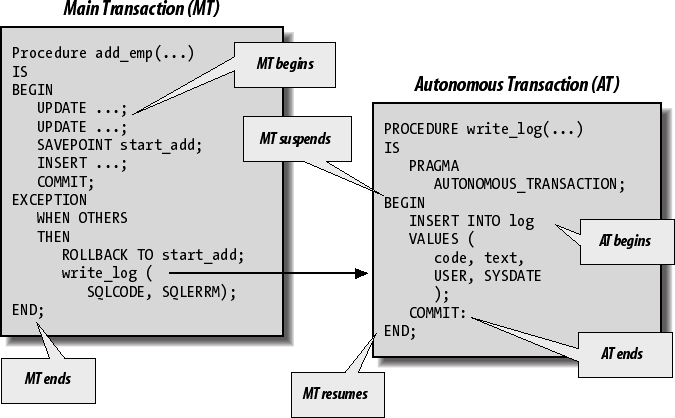Autonomous Transactions
When you define a PL/SQL block as an autonomous transaction, you isolate the DML in that block from the caller’s transaction context. That block becomes an independent transaction that is started by another transaction, referred to as the main transaction.
Within the autonomous transaction block, the main transaction is suspended. You perform your SQL operations, commit or roll back those operations, and resume the main transaction. This flow of transaction control is illustrated in Figure 14-1.

Figure 14-1. Flow of transaction control between main, nested, and autonomous transactions
Defining Autonomous Transactions
There isn’t much involved in defining a PL/SQL block as an autonomous transaction. You simply include the following statement in your declaration section:
PRAGMA AUTONOMOUS_TRANSACTION;
The pragma instructs the PL/SQL compiler to establish a PL/SQL block as autonomous or independent. For the purposes of the autonomous transaction, a PL/SQL block can be any of the following:
Top-level (but not nested) anonymous PL/SQL blocks
Functions and procedures, defined either in a package or as standalone programs
Methods (functions and procedures) of an object type
Database triggers
You can put the autonomous transaction pragma anywhere in the declaration section of your PL/SQL block. You would probably be best off, however, placing it before any data structure declarations. ...
Get Oracle PL/SQL Programming, 5th Edition now with the O’Reilly learning platform.
O’Reilly members experience books, live events, courses curated by job role, and more from O’Reilly and nearly 200 top publishers.

